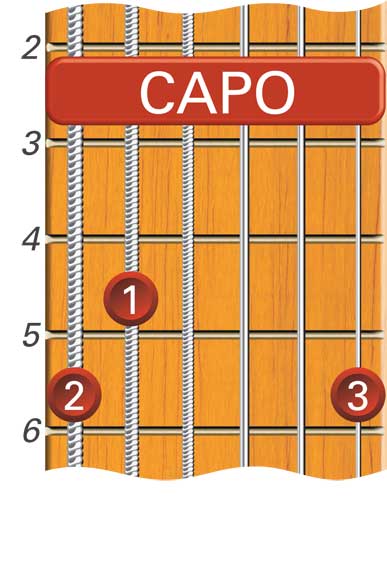
The Capo
The capo is a device which is placed across the neck of the guitar (acting as a movable nut). It has 2 uses:
1. To enable the use of easier chord shapes, without changing the key of a song.
2. To change the key of a song, without changing the chord shapes.
Expanding upon point 1, if a song is in a key which is within your singing range, but involves playing difficult chords (e.g., in the key of Eb), a capo may be used.


Capos come in various shapes and sizes.
The capo allows you to play the song in the same key, yet at the same time use easier (open) chords. Consider a turnaround in Eb:

If you place the capo on the third fret, the following chords can be played without changing the song’s key.


(C chord shape with capo)

(Am chord shape with capo)

(F chord shape with capo)

(G chord shape with capo)
If you have studied bar chords, you will notice that the capo is acting as a bar.
To work out which fret the capo must be placed on, simply count the number of semitones between the "capo key" you have selected to change to (e.g., C, the second part of the previous example) and the original key (i.e., Eb, the first part of the previous example). Hence C to Eb = 3 semitones, and therefore the capo must be placed on the third fret.
Expanding upon point 2, consider a song in the key of C, using the turnaround progression:

A singer may decide that this key is unsuitable for his or her voice range and may wish to use the key of, say, Eb. The progression, transposed to Eb, will become:

Instead of changing to these new chord shapes (i.e., having to use bar chords), the guitarist may still play the C, Am, F and G chords, but must place the capo at the 3rd fret to do so.

(C chord shape)

(Am chord shape)

(F chord shape)

(G chord shape)
Original Key (C)

Original Key (Eb)

* Remember you are not actually changing key but merely changing the chord shapes, for ease of playing.